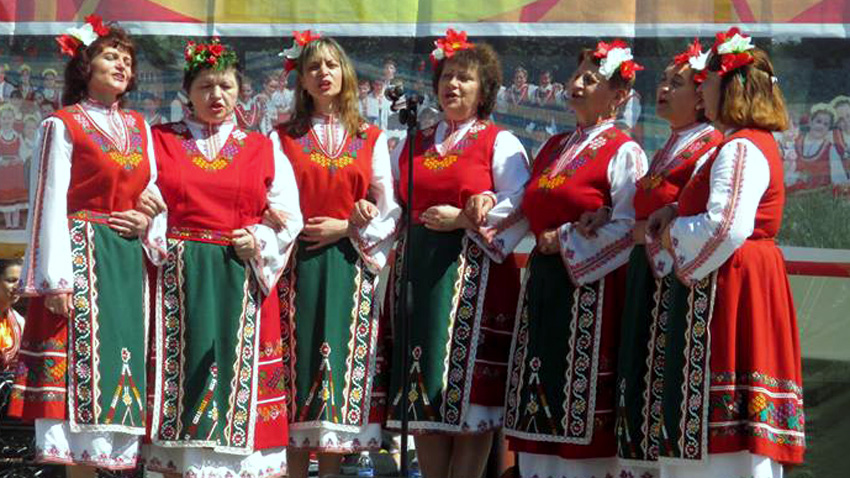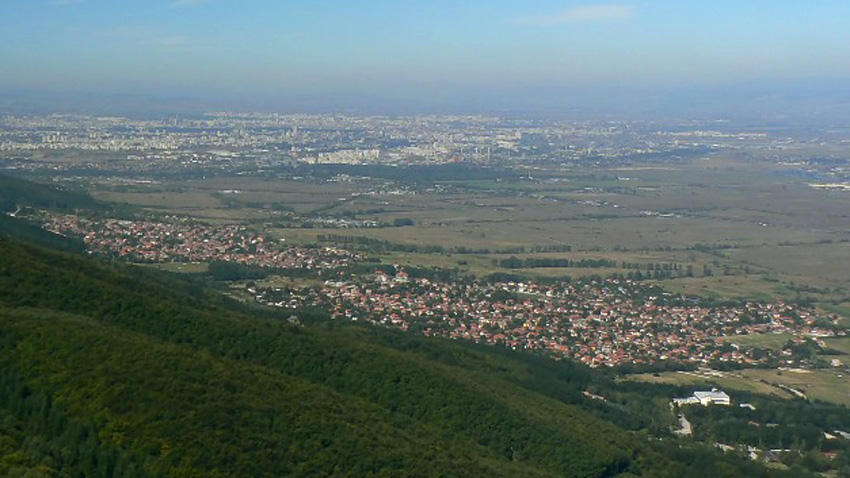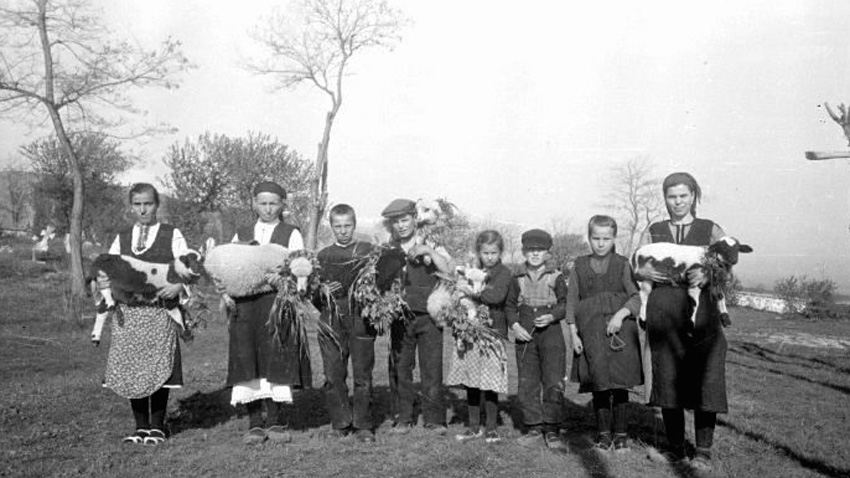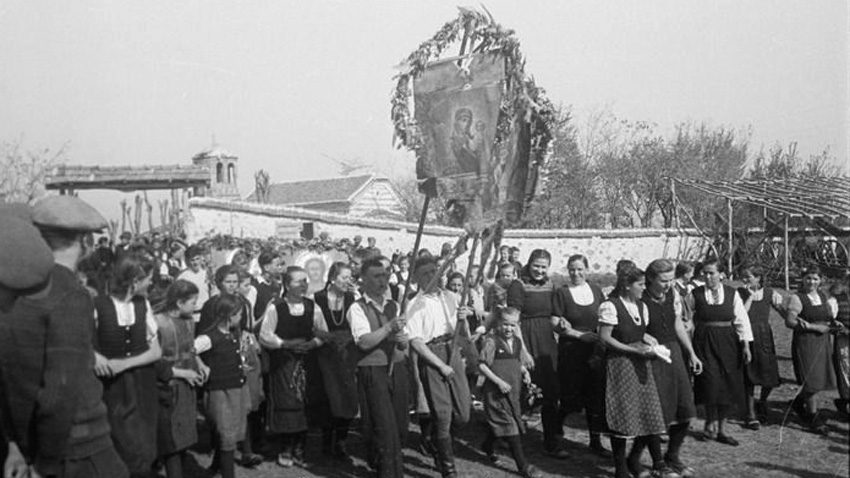Saint George is a Christian martyr and a warrior who was sealed in our minds as a rider who slays a dragon with his spear.Icons depicting Saint George who slays the dragon can be seen in all Bulgarian Orthodox churches. Each year on May 6 the Bulgarian Orthodox Church honors Saint George who has become a symbol of bravery and soldier’s valor. Saint George is a patron saint of farmers and shepherds and a heavenly protector of the Bulgarian army. May 6 is a professional holiday of all military men.

Since time immemorial the Bulgarian people have been associating Saint George’s Day with most rites and rituals dedicated to the land and fertility. Traditionally, people made animal sacrifice and prayed for a healthy and fertile year. The ritual was inherited from the pagan period. This tradition is still alive and all Bulgarians put on their festive table a lamb meal.
The 21st century is the time of the new technologies that split Bulgarian people from their land and nature and they often forget about the ancient rituals. However, the feast is more meaningful when we escape from the urban lifestyle for a while and spend the holidays in a rural environment.

The picturesque village of Lozen situated not far from Bulgaria’s capital Sofia is one of the places where people can feel the festive mood completely. The local female choir gathers every day in the village community center for rehearsals. Tsvetanka Petrova heads the amateur group. She is convinced that everyone should do something, in order to keep the local songs and traditions alive. “Thus, we become good Christians and people”, Tsvetanka says. Currently it is not that easy to adhere to all commands surrounding a given holiday or feast, especially when most people do not breed sheep in their homes and lamb meat sold in the retail stores is expensive and not everyone can afford to buy it for their festive table. Tsvetana Petrova has more about the traditions on Saint Geogre’s Day.

“Saint George’s Day is the best holiday of the year for me, because it is the day of the weary people who welcome spring with joy. This is the moment when nature awakens. Thus, human spirit revives and people feel ease and are able to endure the forthcoming busy months. That is why all village people gather together on Saint George’s Day, sing songs and form long Horo chain dances on the village square. All family members gather around the festive table, because the feeling of coziness, warmth and understanding is more special on that day. Everyone feels great and is filled with good mood. I remember that my grandfather and my mother used to carry a lamb to the church yard. After the prayer, everyone would come back home and the lamb was slaughtered. When the lamb was roasted we would bring it to Saint George’s consecrated ground situated above the village. All people from our village used to gather there at noon. Nowadays, we also visit that place and pray in the local chapel which bears the name of Saint George. Women bring homemade ritual bread and hand it out to other people who organize a joint lunch. We believe that by attending that festive ritual all family members would enjoy sound health and fertility. The leftover food is brought back home and those who for any reason are unable to go to the consecrated ground feast on it. Years ago people used to form a long festive horo chain dance dedicated to Saint George’s Day near the consecrated ground. Today, we try to sing at least some of the traditional songs performed on that day."

Tsvetanka and other older people from the village of Lozen remember another very old tradition. It is linked with the field procession dedicated to Saint George’s Day. "The people once accompanied church icons carried by local priests. They all used to sing the song named Kuni Nosime, Boga Hvalime (we are carrying icons, we are praising God). This was a universal prayer for fertility, because at that time of the year the stem elongation of wheat occurs. This was a very festive procession and later people would go to the local church together.”
English version: Kostadin Atanasov
According to Bulgarian Orthodox tradition, it is customary on major Christian feast days to make a voluntary offering known as kurban. In general, this involves the distribution of food among Christians, which has a special prayerful purpose. Theologians..
Only on the Day of Bravery and Holiday of the Bulgarian Army (May 6), we will provide our visitors with the opportunity to enter three of perhaps the most interesting machines from our outdoor exhibition. This does not happen every..
Dozens of enthusiasts and nature lovers will kick off the 44th edition of the Move and Win campaign with a spring hike to Bozhur Hut. The first walk will take place on 3 May. The meeting point will be the Vladishki Bridge in Veliko Tarnovo . The..
Only on the Day of Bravery and Holiday of the Bulgarian Army (May 6), we will provide our visitors with the opportunity to enter three..
According to Bulgarian Orthodox tradition, it is customary on major Christian feast days to make a voluntary offering known as kurban. In general, this..

+359 2 9336 661
